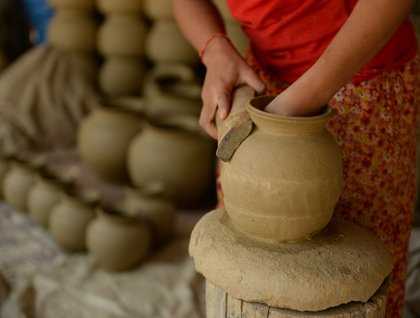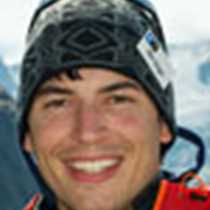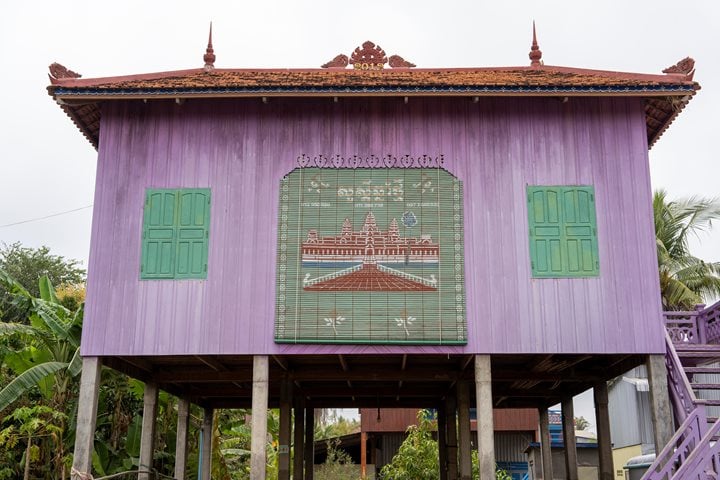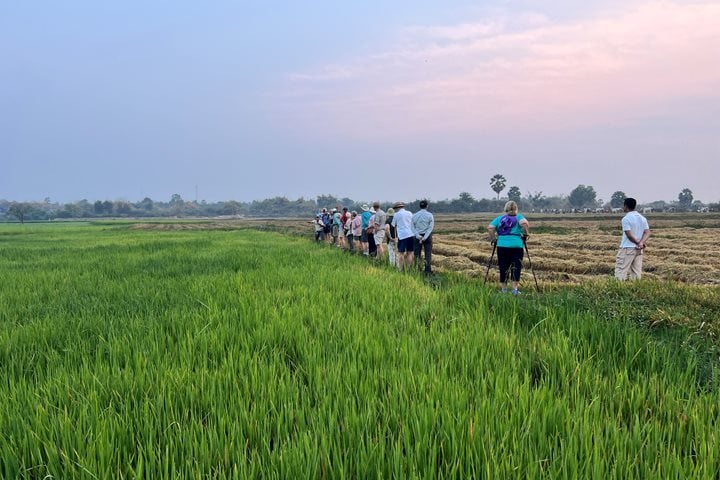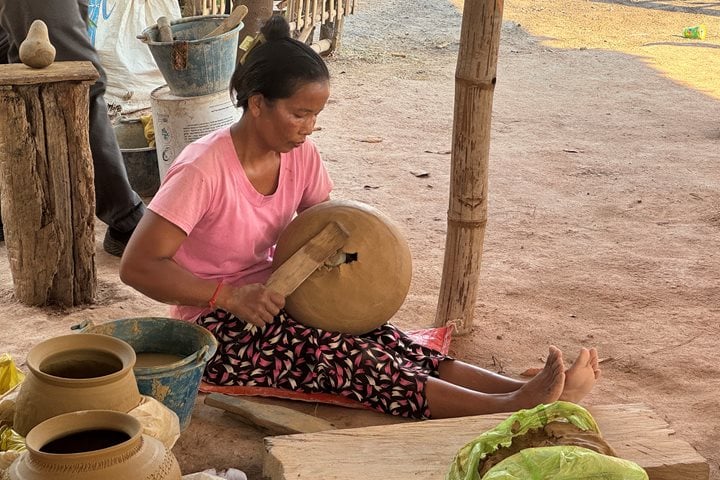Since we had docked overnight in Cambodia’s capital of Phnom Penh, many of us were up early to join photographic instructor Max Seigal for a waterfront walk on the city’s promenade along the Tonle Sap River. A comfortable cloud cover kept it cool, as groups of tourists practiced Tai Chi while the locals danced to zumba.
At 7:30 a.m. we cast off and began our way up the Tonle Sap River. We passed under a few bridges and then sailed past miles of stilted houses, small fishing boats, and floating bamboo fishing platforms. Most of these fishing people were ethnic “Cham” or “Champa”—a culture that emanated from central Vietnam in the sixth century and were once the great rivals of the Khmer during Angkorian times. Formerly Hindu, the Cham are now mainly Moslem from the Malay influence, and we saw many impressive mosques and minarets along this stretch of the river.
As we cruised further upriver, University of Phnom Penh linguistics professor Jean Michel Fillip—a good friend and colleague of Lindblad Expeditions-National Geographic and the Jahan—gave a riveting talk about 20th century Cambodia and all of the politics and events leading up to the Khmer Rouge tragedies and beyond. French colonialism, King Sihanouk, Ho Chi Minh, and the Vietnam War all fell into place in Jean Michel’s animated account of 20th century Cambodia. Even as fishing villages yielded to rice paddies and sugar palms, it was hard to pull ourselves away from the endless wealth of knowledge, answers and perspectives that poured forth with each question.
After lunch we took the local boats for a cruise past floating villages to the town of Kampong Chnnang, or “Pottery Embankment.” We climbed the steps of the dock to meet some local vans for a short drive to the nearby village of Ondong Rossey. The special clay from the nearby hills has made this a center for traditional cooking pottery for centuries. Many of the problem-solving, innovative western engineering minds in our group had a hard time holding back their ideas for more efficient pottery production, but the local ladies would have none of it. We also met Mr. Ry, who at the age of 65 still climbs his sugar palm trees twice a day to bleed the sugar from the palm fruits. This syrup is made into sugar, candies, and from the looks of things, more than a little palm whisky.
We returned to Kampong Chnnang for some interesting cruising along the floating villages, which were actually South Vietnamese refugees from the Mekong delta that had migrated upriver after the Khmer Rouge period. Even though we had now seen quite a bit of the floating world of the Mekong, it still amazed us how people spent their whole lives on the boats, and how agile and dexterous they remained. Last light found us cruising back downriver as fishing boats pulled in their nets, water buffalo and oxen bathed by the riverbank, and families waved to the beautiful riverboat passing by.

